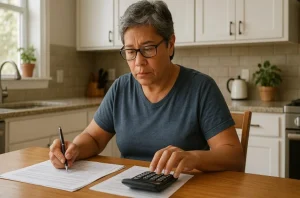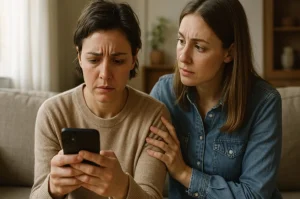Are you wondering if the DWP will offer another cost of living payment in 2025? With rising energy bills, inflation, and the financial pressure many UK households face, it’s a valid concern.
The Department for Work and Pensions (DWP) previously provided a series of tax-free payments between 2022 and 2024 to help low-income families, pensioners, and people receiving benefits manage essential costs. These payments offered vital relief during an economically challenging time, especially for those reliant on government assistance.
However, as of 2025, the scheme has officially ended. While there are no further DWP Cost of Living Payments scheduled this year, alternative financial assistance is still available through various support channels.
This blog will walk you through everything you need to know, from who qualified in the past to what you can claim now. Let’s help you understand what’s changed, what remains, and what options you still have.
What Was the DWP Cost of Living Payment Scheme?

The DWP Cost of Living Payment scheme was introduced to ease the financial burden on low-income households and vulnerable groups during a period of high inflation and energy price surges.
These were one-off, tax-free payments automatically disbursed to eligible recipients between 2022 and 2024. The initiative was jointly run by the Department for Work and Pensions (DWP) and HM Revenue and Customs (HMRC). Payments were made without requiring an application, based on existing benefit or tax credit eligibility.
These payments were not counted as taxable income and did not affect any other benefits you received. The goal was to ensure swift support for those already receiving financial help, such as Universal Credit or Pension Credit.
Importantly, this scheme covered various groups, including working-age adults, pensioners, and people with disabilities. The final DWP Cost of Living Payment was issued between 6 and 22 February 2024, totalling £299.
Below is a table summarising the payment amounts during the scheme:
| Payment Year | Amount | Eligibility Group |
|---|---|---|
| 2022 | £326 and £324 | Means-tested benefit recipients |
| 2023 | £301 and £300 | Means-tested, pensioners, and disability claimants |
| 2024 | £299 | All previously eligible claimants |
While this scheme ended in 2024, it played a vital role in supporting millions through tough financial times.
Will There Be a DWP Cost of Living Payment in 2025?
No, the UK Government has confirmed that there will be no DWP Cost of Living Payment for 2025. This announcement puts to rest the widespread speculation regarding a new payment, such as the rumoured £450 payout. The scheme officially concluded in February 2024 after the final payment was delivered.
Key points to note include:
- The DWP will not issue any new cost of living payments in 2025.
- There is no application process because no additional funding has been announced.
- Rumours about new payments are unfounded and should be disregarded unless verified by GOV.UK.
- Any future support will depend on government policy, the economy, inflation trends, and household needs.
This means that while the official DWP scheme is closed, claimants must now explore other available support schemes offered locally. It’s also essential to stay updated through official government platforms to avoid misinformation and scams pretending to offer financial aid.
With the end of this national scheme, other support options have become more important than ever in 2025.
What Financial Help is Still Available in 2025 if You’re on a Low Income?

Even though there is no DWP Cost of Living Payment in 2025, several support schemes are still in place for those struggling with everyday expenses.
These options can provide help with essentials such as food, rent, energy bills, and household goods. Local authorities and national programmes continue to offer aid to qualifying individuals.
Available support includes:
- Household Support Fund: Local councils in England offer this assistance to help cover costs like food, utilities, and clothing. Each council sets its own rules and criteria, so contact yours directly.
- Discretionary Housing Payments: If you receive Housing Benefit or the housing element of Universal Credit, you may qualify for extra help paying rent.
- Pension Credit: Aimed at pensioners on low income, this can also unlock additional benefits such as free TV licences and Warm Home Discount.
- Local Welfare Assistance: Many councils provide one-off grants for emergency food, clothing, or other urgent needs. Availability and criteria vary regionally.
You can also get personalised guidance through Citizens Advice, which offers help online or in person. It’s worth checking with your council’s website to see what you’re eligible for.
These support options may not replace the Cost of Living Payment, but they provide critical relief when you need it most.
Can You Still Claim a Past DWP Cost of Living Payment?
If you think you qualified for a previous DWP Cost of Living Payment between 2022 and 2024 but didn’t receive it, you may still have a chance to claim it.
These payments were made automatically to eligible benefit recipients. However, if an error occurred or your circumstances were not properly recorded at the time, you can still report a missing payment.
Here’s what to do:
- Visit the Report a missing Cost of Living Payment section on GOV.UK.
- Prepare your National Insurance number, personal details, and information about the benefit you were receiving at the time.
- Submit your request using the official online portal or call the relevant office that handles your benefit.
Keep in mind:
- Claims are only valid if you were entitled to the payment during the original qualifying dates.
- DWP uses an automated system to identify eligibility, but mistakes can happen.
- If found ineligible after payment, you may be required to repay it.
- You can contact the office responsible for your benefit to ask for a review or explanation of the decision.
Act promptly if you think you missed a payment, as these errors must be resolved through proper channels.
What Benefits Qualified for the DWP Cost of Living Payment in Previous Years?

To receive any of the previous Cost of Living Payments, you had to be on specific means-tested benefits or tax credits. The payments were designed to reach those most affected by rising living costs, and eligibility was determined based on benefit entitlements during particular assessment periods.
Benefits that qualified included:
- Universal Credit (income-based)
- Pension Credit
- Income Support
- Income-based Jobseeker’s Allowance (JSA)
- Income-related Employment and Support Allowance (ESA)
- Child Tax Credit
- Working Tax Credit
You were not required to apply for these payments if you received any of the benefits above. Payments were automatically transferred in the same method you received your usual benefit. In some cases, if eligibility was determined after the payment period, backdated payments were made.
These payments were entirely separate from regular benefit amounts and were designed to support cost increases in food, energy, and housing.
If you’re unsure whether you received all entitled payments, the GOV.UK tool can help you check your history.
Knowing what benefits qualified is essential to verifying whether you might have missed any eligible payments.
Will These Payments Affect Your Taxes or Other Benefits?
The DWP Cost of Living Payments were deliberately structured to avoid impacting your tax or benefit status. They were classed as non-taxable income, meaning you didn’t have to report them to HMRC or include them in any tax return.
Additionally, receiving a cost of living payment did not reduce or alter your eligibility for any other benefits. Whether you received Universal Credit, Pension Credit, or Disability Allowance, the additional payment had no bearing on future claims or ongoing awards.
If you received a payment but were later found to be ineligible, the government reserves the right to request repayment. However, most eligible recipients received their payments without issue.
Also, if you’re concerned about how these payments might be recorded, it’s advisable to speak to your local benefits office for clarification. Overall, these payments were designed to offer relief, not create complications in your financial situation.
How Do You Avoid DWP and Cost of Living Payment Scams?

Unfortunately, scams related to government payments, including the Cost of Living Payment, have become increasingly common. Fraudsters may contact you via phone, email, or text message, pretending to be from the DWP or another government department.
To protect yourself:
- Be cautious if you’re asked to provide personal or banking information. The DWP will never ask for sensitive details via text or email.
- Ignore messages that claim you must apply for a cost of living payment. These payments were made automatically to those eligible.
- Look for typos, suspicious links, and urgent language, common signs of scams.
- Always confirm details through official websites like GOV.UK or consult Citizens Advice.
If you suspect a scam, report it immediately via the official GOV.UK reporting page. Staying informed is your best defence against fraud. Trustworthy sources will never contact you out of the blue to ask for private information.
Cost of Living Payments (2022–2024)
The table below outlines the complete timeline of Cost of Living Payments provided by the DWP between 2022 and 2024. These figures helped millions manage higher living costs during the financial challenges brought on by inflation, energy prices, and economic instability.
| Year | Payment Amounts | Paid To | Payment Period |
|---|---|---|---|
| 2022 | £326 and £324 | Means-tested benefit claimants | Summer and Autumn 2022 |
| 2023 | £301 and £300 | Universal Credit, Pensioners, Disability Support | Spring and Autumn 2023 |
| 2024 | £299 | All eligible benefit recipients | 6 to 22 February 2024 |
These payments were made directly into recipients’ bank accounts and required no application. If you’re unsure whether you received all entitled payments, you should verify with GOV.UK.
They served as an essential cushion for vulnerable households during tough times.
Conclusion
While the DWP Cost of Living Payment scheme officially ended in 2024, the need for financial support across the UK remains high. Although there are no new payments planned for 2025, several alternative schemes can still help those on low incomes manage essential expenses.
From council-run funds to benefits like Pension Credit and Discretionary Housing Payments, you have options if you’re struggling.
It’s important to stay informed through trusted sources such as GOV.UK and Citizens Advice, especially in an environment where misinformation and scams are increasing.
If you believe you missed a past payment, act quickly using the correct reporting channels. Keep checking for updates, and don’t hesitate to seek independent advice to make sure you’re receiving all the support you’re entitled to in 2025.
FAQs
What is replacing the DWP Cost of Living Payment in 2025?
There is no official replacement, but support like the Household Support Fund and Pension Credit still offer help.
Can pensioners still get help in 2025?
Yes, Pension Credit is available and may unlock additional support such as free TV licences and heating assistance.
Is there still help with energy bills in 2025?
Yes, local councils may offer help through the Household Support Fund depending on your circumstances.
How do I know if I missed a cost of living payment?
You can report a missing payment on GOV.UK using your National Insurance number and benefit details.
Will Universal Credit claimants receive anything in 2025?
There are no new payments from DWP, but other council-level support may be available.
Are there any extra payments for people with disabilities in 2025?
No new national payments are announced, but local schemes or disability-specific benefits may still apply.
Is the £450 cost of living payment real in 2025?
No, this is a rumour. The government has not announced any such payment for 2025.

Leave a Reply